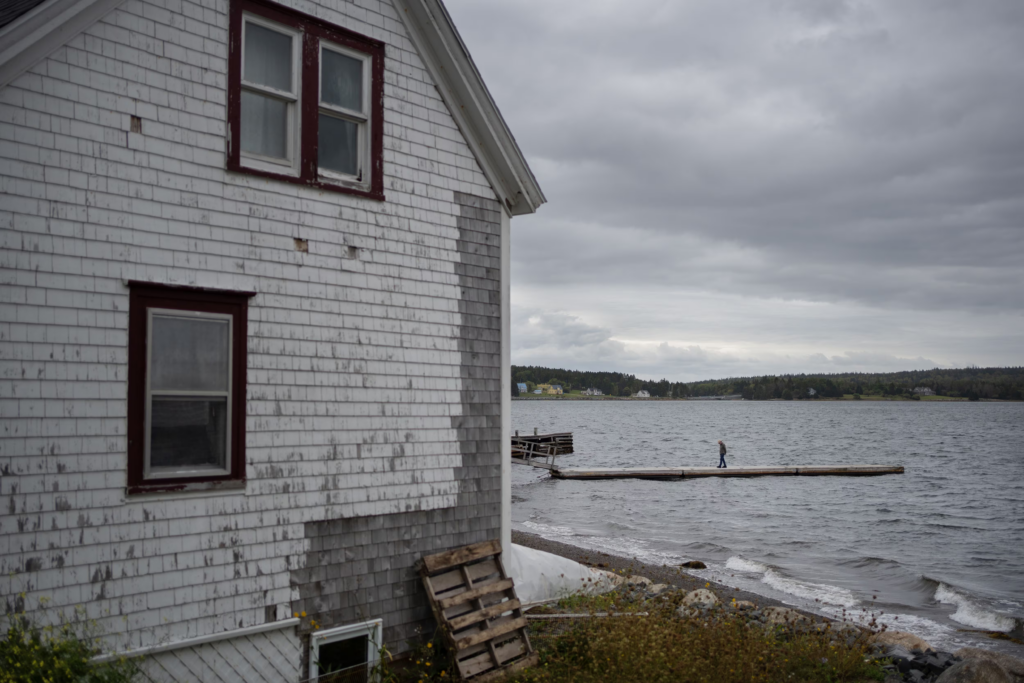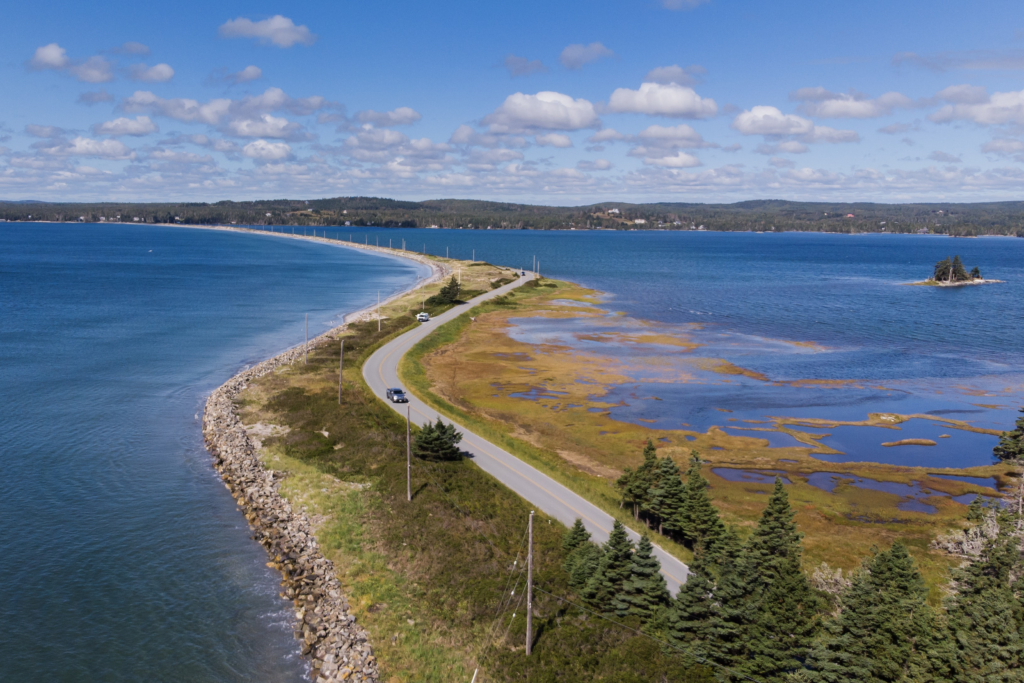The recent decision to ease coastal development regulations in Nova Scotia has left local communities grappling with the complex challenges posed by rising sea levels. This regulatory shift places the responsibility of managing climate-related risks squarely on the shoulders of homeowners and municipalities, forcing them to navigate an uncertain future where the impacts of climate change are increasingly pronounced.
The Context of Coastal Development Regulations
Historically, coastal development regulations were designed to protect vulnerable areas from the adverse effects of rising seas and storm surges. These regulations guided what could be built and where, aiming to safeguard not only the environment but also the livelihoods and safety of residents. However, with recent changes in policy, many communities find themselves with increased autonomy to develop coastal lands without the same level of oversight.
This shift has led to a range of responses across Nova Scotia. Some municipalities have welcomed the opportunity for development, seeing it as a chance to stimulate local economies and increase housing availability. Others, however, recognize the inherent risks that come with building in areas susceptible to flooding and erosion.
The Implications of Unregulated Development
Increased Vulnerability to Climate Change
In the absence of strict regulations, development in high-risk areas becomes more prevalent, heightening the exposure of homes, businesses, and infrastructure to the direct and dangerous effects of climate change. This unregulated expansion, particularly along vulnerable coastlines, places properties at immediate risk as sea levels continue to rise. Buildings constructed too close to the shore are increasingly susceptible to flooding, which can lead not only to extensive physical damage but also to the costly and lengthy process of repairs and restoration. Furthermore, residents in these areas face the possibility of displacement, especially in cases where the structural integrity of their homes cannot withstand repeated climate impacts. Without the enforcement of setback limits or building codes suited to climate resilience, these communities are left vulnerable, with limited options to adapt as extreme weather events intensify.
Environmental Degradation
Coastal ecosystems, such as wetlands, marshes, and mangroves, play a critical role as natural barriers against storms, erosion, and flooding. These ecosystems absorb wave energy, reduce storm surges, and help regulate water levels, offering essential protection to nearby communities. However, unregulated development along coastlines often results in the disruption or destruction of these delicate habitats, eroding nature’s defenses against climate change. Construction projects that encroach on these ecosystems contribute to increased erosion, soil degradation, and habitat fragmentation, leaving the coastline less resilient to storm damage and rising sea levels. When natural barriers are weakened or eliminated, the impacts of storms and flooding on human communities are magnified, creating a cycle of increasing vulnerability and environmental loss that leaves both people and biodiversity at risk.
Economic Consequences
Although coastal development may appear economically advantageous in the short term, the financial burden associated with climate-related disasters often overshadows these immediate gains. As climate events intensify, homeowners in high-risk areas face escalating repair costs and soaring insurance premiums, which can become unsustainable over time. For municipalities, the expenses extend even further, as they must allocate more funds toward emergency response, infrastructure repairs, and disaster preparedness. The strain on local governments to support recovery efforts and rebuild after frequent climate events can result in budgetary shortfalls or the diversion of resources away from other essential community needs. In the long term, the financial toll of building in unregulated, high-risk areas places economic strain on both individual property owners and public services, calling into question the true cost-benefit balance of such development. As these economic realities take shape, it becomes clear that the initial appeal of development-driven revenue cannot compensate for the ongoing expense of climate adaptation and recovery, emphasizing the importance of strategic planning and sustainable development practices.

Navigating the Future: Community Choices and Adaptation
Nova Scotia’s coastal communities, confronted with the dual challenges of rising seas and limited regulatory protections, are at a pivotal crossroads in determining how they approach future development. Without a careful and proactive approach, the impact of climate change on these communities could be devastating. Here are several strategies that can help mitigate risks while fostering sustainable development practices that protect both people and the natural environment.
Community Engagement and Education
Engaging the community is an essential first step in building resilience against coastal risks. Through open dialogues and targeted educational initiatives, residents can become more aware of the hazards linked to coastal development and the potential impacts of climate change on their homes and livelihoods. Such programs can educate homeowners on the increased risks of flooding, erosion, and sea-level rise, helping them make informed, responsible choices regarding building and land use. Informed residents are more likely to support and participate in sustainable practices, creating a shared sense of responsibility and fostering a culture of climate awareness and proactive engagement.
Developing Local Adaptation Plans
For municipalities, creating adaptation plans tailored to the specific environmental challenges of their coastal regions is crucial. These plans should comprehensively address areas most at risk, assess the vulnerabilities of local infrastructure, and outline practical steps for enhancing resilience. By prioritizing investments in protective infrastructure, such as seawalls, stormwater systems, and elevated roadways, municipalities can mitigate some of the immediate impacts of climate change while reducing future repair and recovery costs. Additionally, a well-thought-out adaptation plan can guide land use policies, providing a framework that prevents high-risk development and supports long-term community resilience.
Investing in Natural Solutions
Preserving and restoring natural ecosystems along the coast—such as wetlands, dunes, and marshes—offers a highly effective, nature-based approach to reducing flood risks and supporting biodiversity. These ecosystems act as natural buffers, absorbing wave energy and mitigating storm surges, while also providing valuable habitats for local wildlife. Investments in green infrastructure, like restoring salt marshes or planting dune-stabilizing vegetation, offer multiple benefits beyond flood protection. They enhance community aesthetics, offer recreational spaces, and improve water quality, all of which can strengthen local resilience and boost the quality of life for residents. Such natural solutions offer a sustainable, cost-effective alternative to more traditional flood control methods, which are often expensive and environmentally disruptive.
Collaborative Approaches to Coastal Management
Tackling climate challenges requires a collaborative approach that brings together municipal governments, provincial authorities, environmental organizations, and community groups. By pooling resources, knowledge, and expertise, these stakeholders can collectively improve coastal resource management and address development challenges more effectively. Collaborative frameworks also allow communities to share best practices, develop consistent policies, and ensure that actions are well-coordinated across jurisdictions. For instance, a collaborative approach could involve joint efforts in establishing buffer zones, designing compatible infrastructure projects, or creating educational campaigns. Working together not only strengthens each community’s capacity to cope with climate impacts but also promotes a unified response that can be more resilient and adaptable in the long term.
In essence, Nova Scotia’s coastal communities have the opportunity to shape their future in the face of rising seas by choosing strategies that prioritize sustainability and resilience. Through community education, strategic planning, natural restoration, and collaboration, they can build a safer, more resilient future that respects the environmental and economic importance of their coastal regions. By embracing these proactive measures, Nova Scotians can protect their communities from the worst effects of climate change, while ensuring that future generations inherit a thriving, sustainable coastline.

The Path Forward
As Nova Scotia grapples with the implications of relaxed coastal development regulations, communities must take charge of their futures in the face of rising sea levels. While the freedom to develop land can present opportunities, it also comes with significant risks that require careful consideration and planning.
By prioritizing education, fostering community engagement, and implementing sustainable practices, Nova Scotia’s communities can navigate the challenges posed by climate change while ensuring the safety and resilience of their coastal environments. The path forward will not be easy, but with thoughtful action and collaboration, these communities can forge a future that balances development with environmental stewardship.
Related Content
- 2024: A Year of Climate Extremes
- Harnessing the Sun: The Imperative Shift to Solar Energy for a Sustainable Future
- La Niña and Its Potential Impacts: Challenges for Winter 2024-2025
- Kawasaki’s Hydrogen Motorcycle: A Pioneering Step Towards a Greener Future
- Effective Climate Change Communication: Latest Research and Ecological Perspectives
- The Atlantic Ocean’s Unprecedented Cooling: A New Climate Challenge
- Caribbean disaster
- Nova Scotia Government Releases Code Of Conduct for Provinces
- Coastal Development Regulations Gone for Nova Scotia

